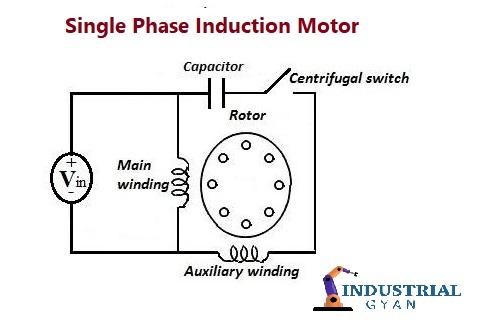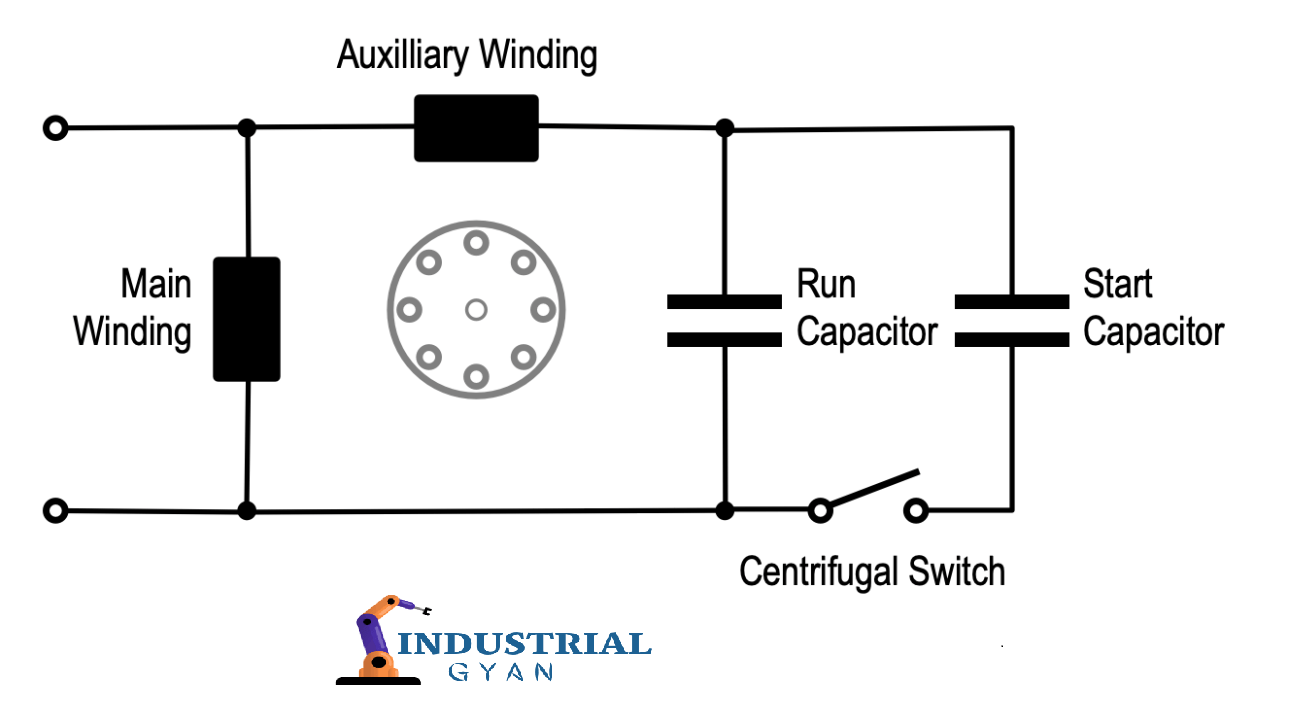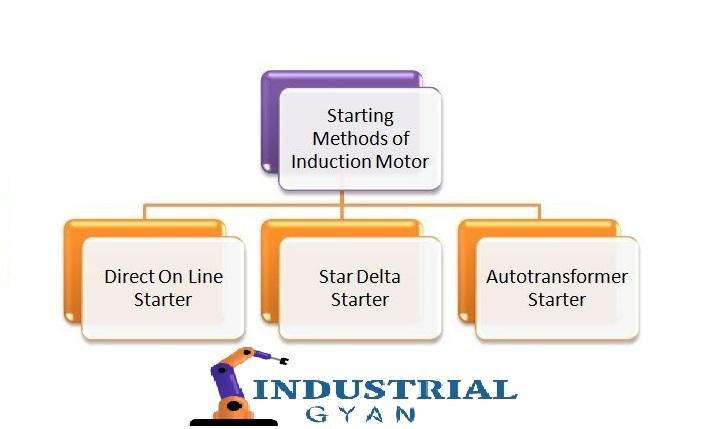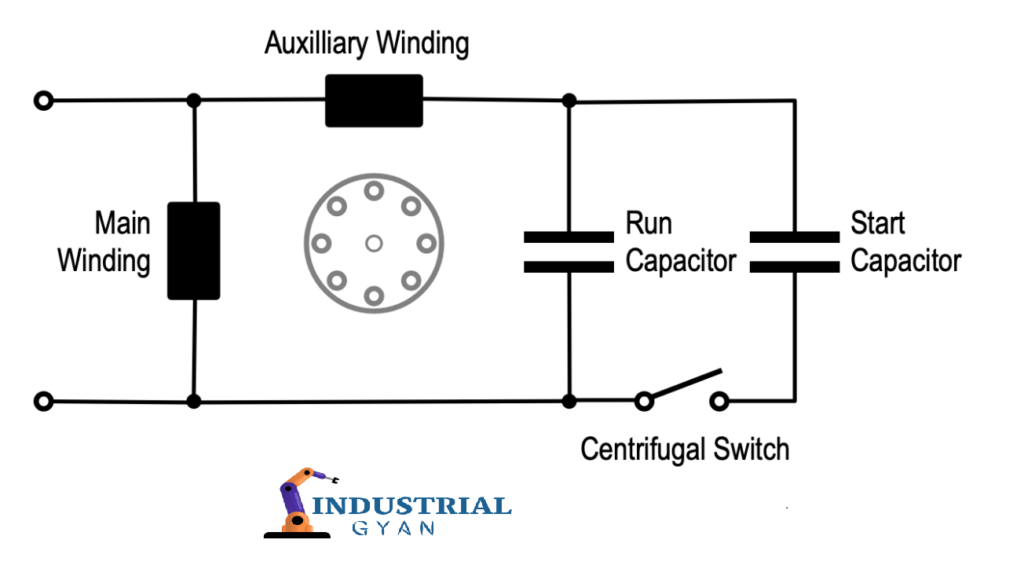Why Single Phase Induction Motor is Not Self-Starting?
Introduction
Today we will see why Single phase induction motor is not self starting,Single phase induction motor are widely used in various applications due to their simplicity, cost-effectiveness, and easy availability. However, unlike three-phase induction motors, single-phase induction motors require external means to initiate rotation. In this article, we will explore the reasons why single-phase induction motors are not self-starting and discuss different methods to overcome this limitation.
What is a Single Phase Induction Motor?

Before delving into the topic, let’s briefly understand what a single-phase induction motor is. A single-phase induction motor is an electric motor that operates on a single-phase power supply. It consists of a stator, which generates a rotating magnetic field, and a rotor, which rotates in response to this field. The interaction between the stator’s magnetic field and the rotor’s currents produces the rotational motion.
Working Principle of Single Phase Induction Motor
In a single-phase induction motor, the stator’s winding is energized by an AC power supply, resulting in the production of a rotating magnetic field. This magnetic field induces currents in the rotor, which in turn produces a magnetic field. The interaction between the two magnetic fields causes the rotor to rotate. However, the initial rotation is a challenge due to the absence of a rotating magnetic field at startup.
Why Single Phase Induction Motors are Not Self-Starting?
Single-phase induction motors are not self-starting because they lack a rotating magnetic field during startup. Unlike three-phase induction motors, single-phase motors rely on alternative methods to initiate rotation. The absence of a rotating magnetic field is primarily caused by the single-phase power supply’s nature, which produces a pulsating magnetic field rather than a rotating one.
Split Phase Induction Motor
One common method to make single-phase induction motors self-starting is the split-phase induction motor. This type of motor includes a special starting winding in addition to the main winding. The starting winding creates an additional phase shift, enabling the motor to generate a rotating magnetic field during startup. Once the motor reaches a certain speed, the starting winding is disconnected.
Capacitor Start Induction Motor
Another approach is the capacitor start induction motor. This motor incorporates a capacitor in series with the auxiliary winding. The capacitor provides an additional phase shift, which helps in the production of a rotating magnetic field during startup. Once the motor reaches a predetermined speed, a centrifugal switch disconnects the capacitor from the circuit.
Shaded Pole Induction Motor
The shaded pole induction motor is yet another method to make single-phase induction motors self-starting. It includes a small copper coil or shading coil placed asymmetrically around a portion of the pole. This shading coil creates a rotating magnetic field, which initiates rotation in the rotor. However,
Methods to Make Single Phase Induction Motors Self-Starting
To overcome the limitation of non-self-starting behavior in single-phase induction motors, several methods have been developed. Here are some commonly used methods:
1. Split Phase Induction Motor
The split-phase induction motor is a popular method to achieve self-starting in single-phase motors. It involves using a special starting winding in addition to the main winding. The starting winding is positioned at an angle to the main winding, creating a phase shift. This phase shift produces a rotating magnetic field during startup, enabling the motor to initiate rotation.
2. Capacitor Start Induction Motor

The capacitor start induction motor is another effective method to make single-phase induction motors self-starting. This type of motor includes a capacitor connected in series with the auxiliary winding. The capacitor creates a phase shift between the currents in the main and auxiliary windings, resulting in a rotating magnetic field during startup. Once the motor reaches a predetermined speed, a centrifugal switch disconnects the capacitor from the circuit.
3. Shaded Pole Induction Motor
The shaded pole induction motor is a simple and cost-effective solution for achieving self-starting in single-phase induction motors. It incorporates a small copper coil or shading coil placed asymmetrically around a portion of the pole. When the motor is energized, the shading coil produces a time-delayed magnetic field, which causes the rotor to start rotating. However, shaded pole motors are typically used for low-power applications due to their lower efficiency.
Starting Methods for Single Phase Induction Motors

Apart from the specific motor designs mentioned above, there are other starting methods used for single-phase induction motors. These methods include:
1. External Starting Devices
In some cases, external starting devices such as a centrifugal switch or a starting relay are employed to initiate rotation in single-phase induction motors. These devices help in creating the necessary phase shift or enable the motor to operate with a rotating magnetic field from the beginning.
2. Electronic Starting Circuits
Modern advancements in electronics have led to the development of electronic starting circuits for single-phase induction motors. These circuits utilize electronic components such as solid-state relays, capacitors, and integrated circuits to generate the required phase shift and enable self-starting.
Conclusion
In conclusion, single-phase induction motors are not self-starting due to the absence of a rotating magnetic field during startup. However, various methods have been devised to overcome this limitation. Split-phase induction motors, capacitor start induction motors, shaded pole induction motors, external starting devices, and electronic starting circuits are all effective ways to make single-phase induction motors self-starting. Each method has its advantages and disadvantages, depending on the specific application requirements. By implementing these methods, the self-starting capability of single-phase induction motors is achieved, enabling their widespread use in various industries.
FAQs
- Can single-phase induction motors be self-starting?
- No, single-phase induction motors are not self-starting by nature. They require external means or specific motor designs to initiate rotation.
- How does a split-phase induction motor start?
- A split-phase induction motor starts by using a special starting winding in addition to the main winding. This starting winding creates a phase shift, enabling the motor to generate a rotating magnetic field during startup.
- What is the purpose of a starting capacitor in a single-phase induction motor?
- The starting capacitor in a single-phase induction motor provides a phase shift between the currents in the main and auxiliary windings. This phase shift helps in the production of a rotating magnetic field during startup, enabling self-starting.
- Are all single-phase induction motors not self-starting?
- Yes
You can follow us on LinkedIn

I am an electrical & automation engineer with extensive experience in Design, PLC programming, SCADA development, and IoT integration. I have a strong background in the industry, focusing on the Design & Development of Hardware, Software &Industry 4.0 technologies, and the integration of intelligent manufacturing systems.
I have a deep understanding of electrical principles and am proficient in various programming languages, including Ladder Logic, Structured Text, and Python. In addition, I have experience with various PLC, SCADA & IoT technologies and a track record of successful integration projects for various clients.

